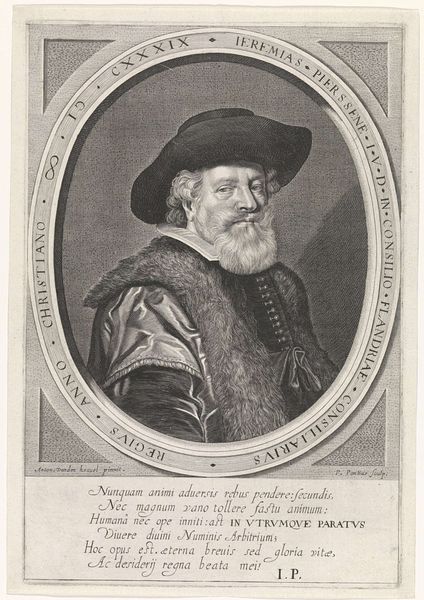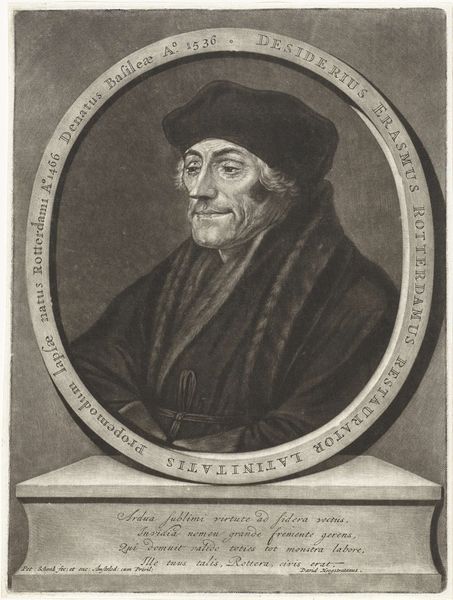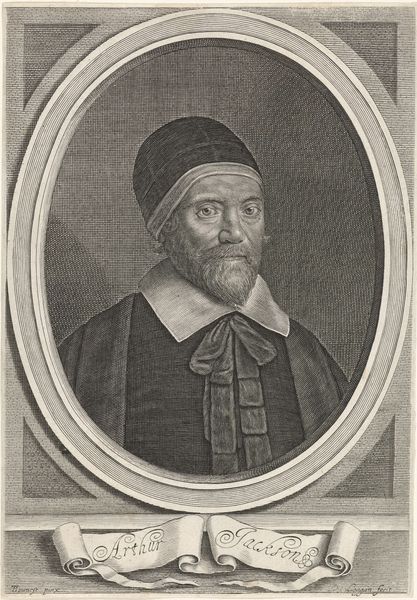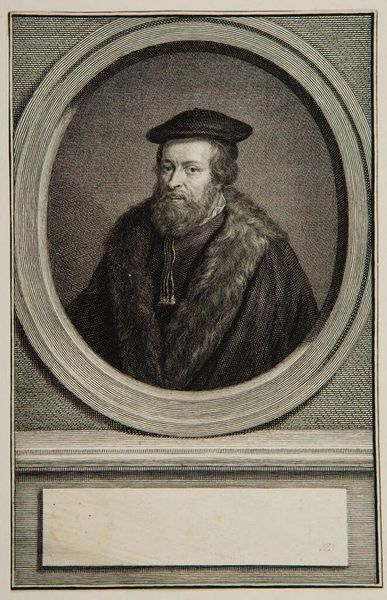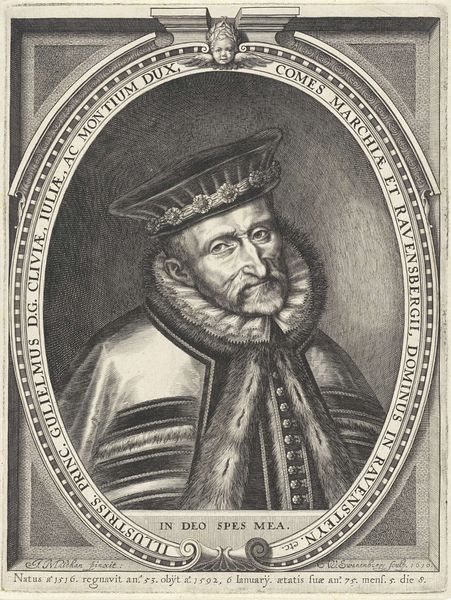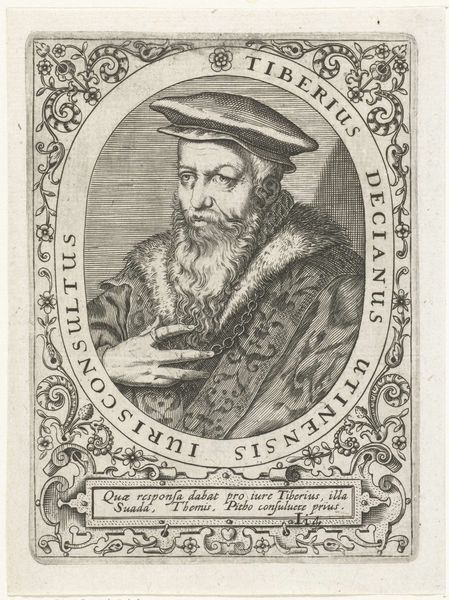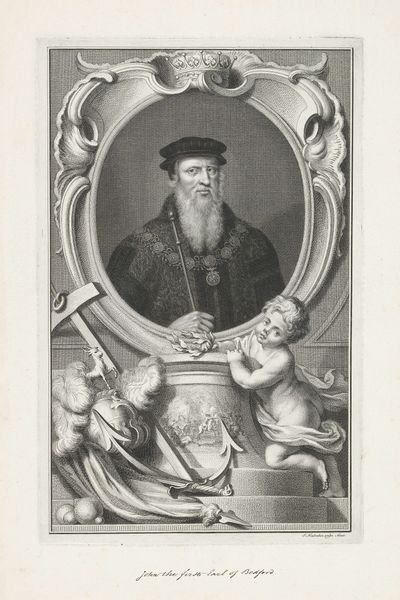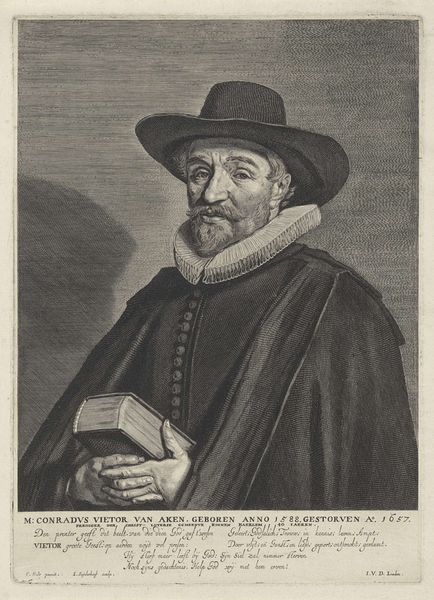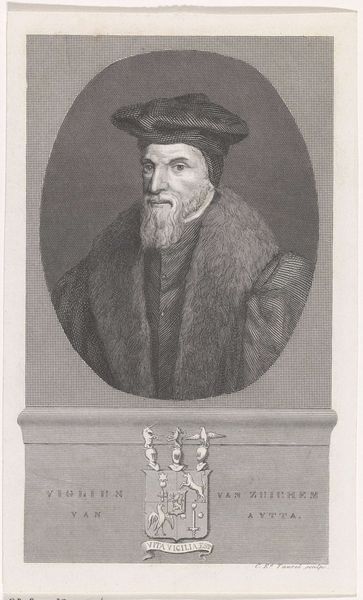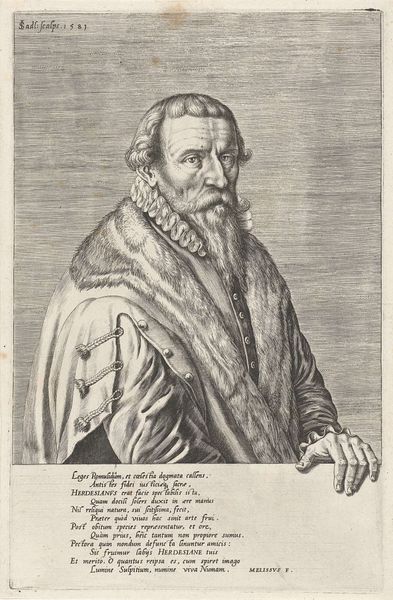
print, engraving
#
portrait
#
baroque
# print
#
figuration
#
line
#
engraving
Dimensions: height 176 mm, width 126 mm
Copyright: Rijks Museum: Open Domain
Curator: What strikes me immediately about this print, Theodor Matham's portrait of Gerardus Amelisz. van Hoogeveen, dating from the 17th century, is the gravity conveyed despite it being a relatively simple engraving. The man's presence is palpable. Editor: Yes, there's an undeniable air of learned authority about him, isn’t there? I wonder what sort of weight his accessories carry—the fur stole and the velvet beret. Those feel like markers of significant social standing, especially for the time. Curator: Absolutely. Hoogeveen held several prominent positions, and Matham has captured that. As the inscription tells us, he was "I.C. Dominus," likely referring to "Juris Civilis Dominus" – a Doctor of Civil Law - and served as a curator at Leiden University and was involved with the local Synod, so accessories might allude to public role and political authority. The baroque style uses realism to reflect this era and is related to institutional portraits Editor: The fur stole indeed! It reminds me of similar adornments in portraits of important leaders and scholars of the era—visual clues about status, intelligence, or perhaps even connections to royalty. The oval frame around him, that feels symbolic as well, set apart, almost haloed by status and accomplishment. What might an academic curator in the 17th century oversee? Curator: Given his role at Leiden, quite likely manuscripts, early printed books, and perhaps even natural history collections. The University had strong connections to scholarly networks across Europe at the time, so to be curator there was quite a prominent and political position to hold. Editor: It's fascinating how so much can be communicated through seemingly simple choices in imagery, Matham’s choices reflecting Hoogeveen's place in the public eye of his time. From a purely graphic point, it gives an opportunity to put a face to a name on documents in the archives of the Netherlands. Curator: Exactly. This portrait, in the Rijksmuseum’s collection today, connects us to the man and his era, providing tangible context for how education and knowledge were valued and portrayed within Dutch society. It enriches our understanding of the past. Editor: I see Van Hoogeveen’s stern expression softens somewhat when one considers the broader portrait of the age that this image represents—a man of his time elevated by it.
Comments
No comments
Be the first to comment and join the conversation on the ultimate creative platform.


